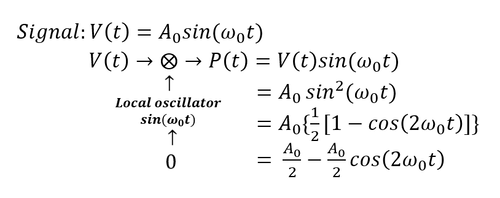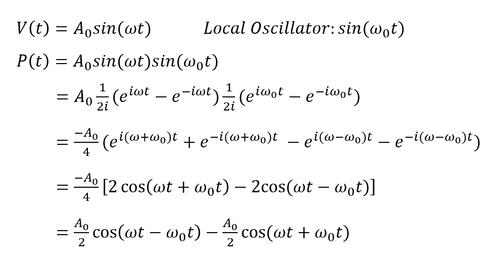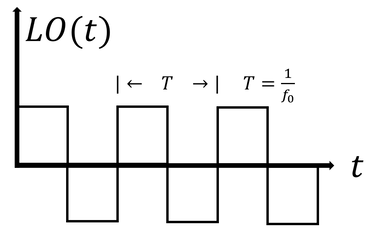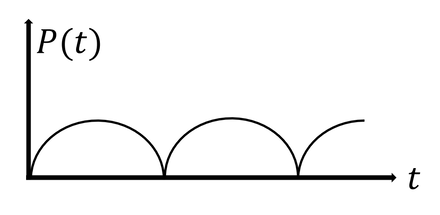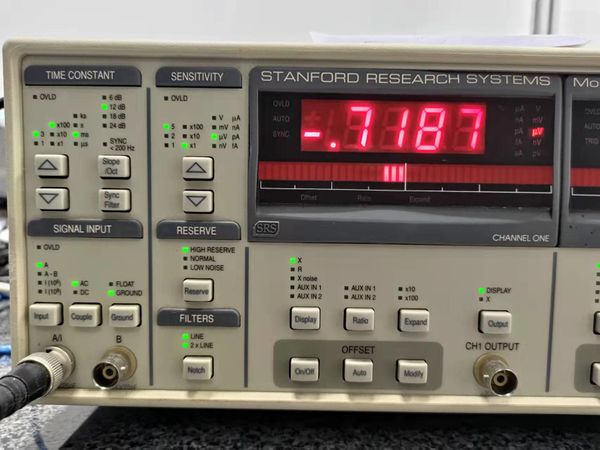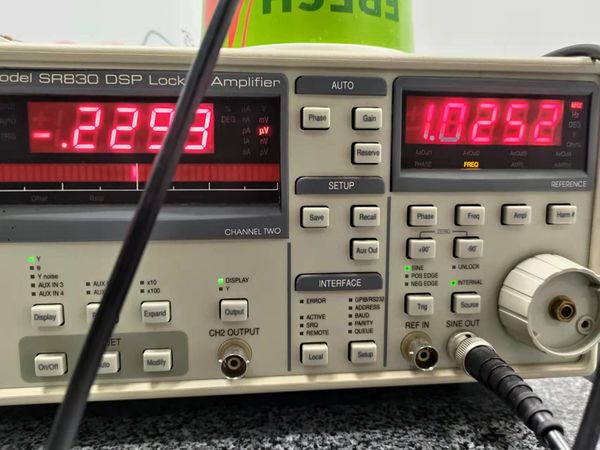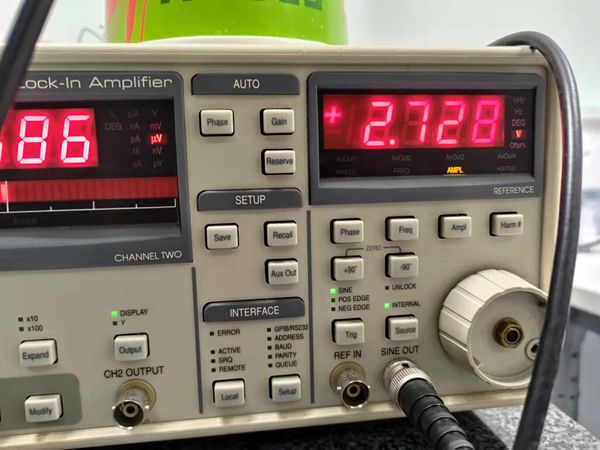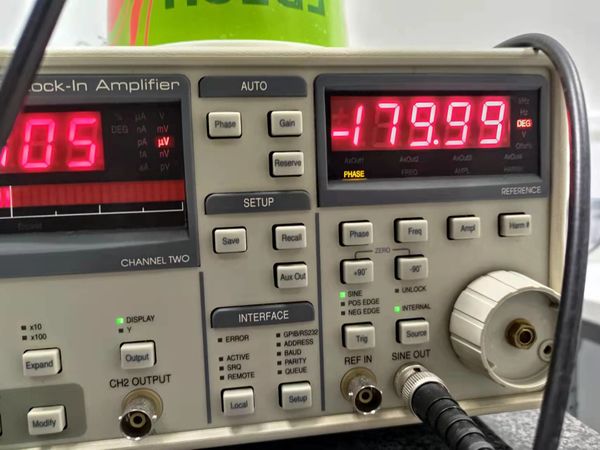Smoke detection in air
Introduction
Smoke detector is a device that senses smoke, typically as an indicator of fire. Commercial smoke detectors issue a signal to a fire alarm control panel as part of a fire alarm system. Household smoke detectors, also known as smoke alarms, generally issue an audible or visual alarm from the detector itself or several detectors if there are multiple devices interlinked [1].
Lock-In Amplifier
Measure small signals in a large background (huge noise).
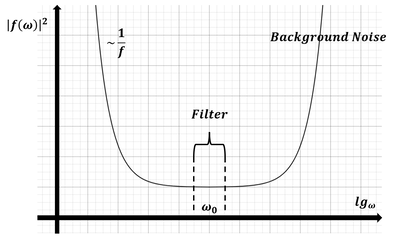
Mathematical Description
Signal Process
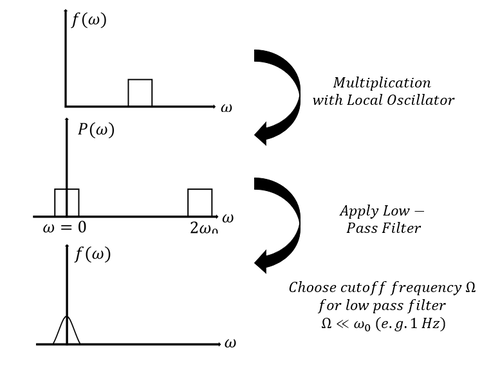
Logic Flow
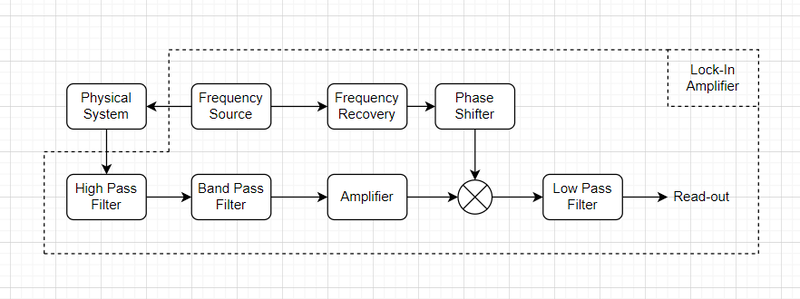
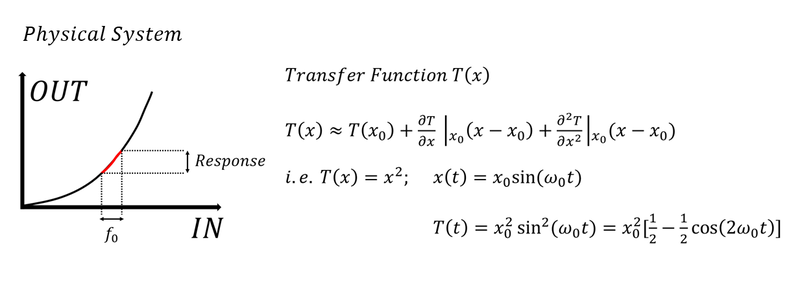
Experiment
We can divide this experimental setup into two parts: the first part will detect the scattering light in the air, and the second part will amplify such signal.
Component List
- 1) DC Voltage source (MATRIX MODEL: MPS-3005L-3)
- 2) MODEL SR830 DSP Lock-In Amplifier
- 3) BWP34 Silicon PIN Photodiode
- 4) WAVESURFER 104MXS Oscillator
- 5) Capacitor (50V 22uF)
- 6) Resistor (1.2K)
- 7) LED (Green)
Schematics
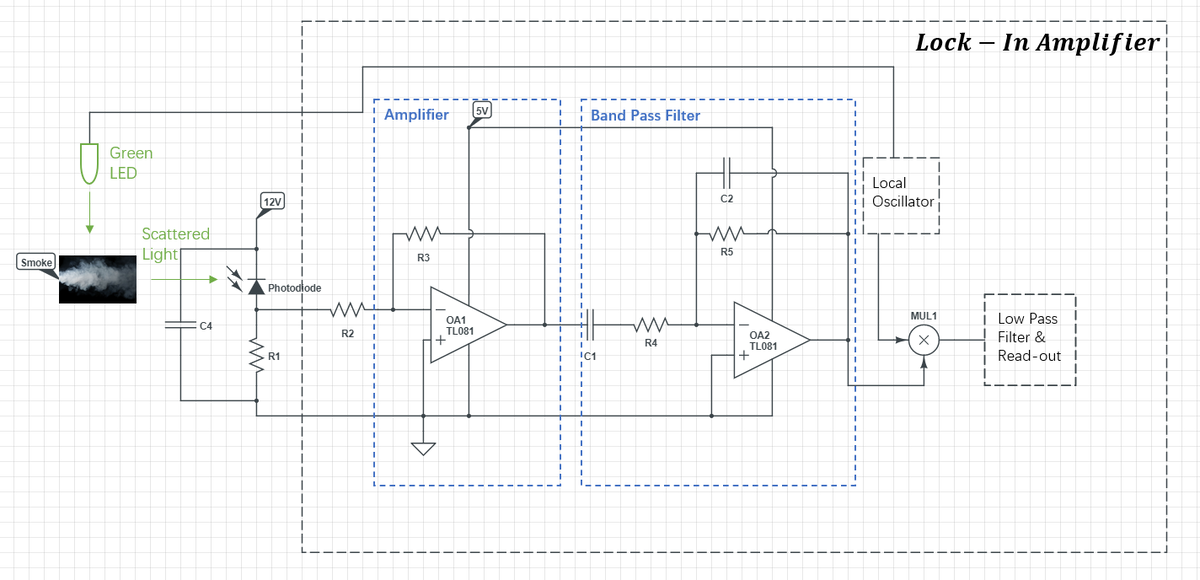
Detection Setup
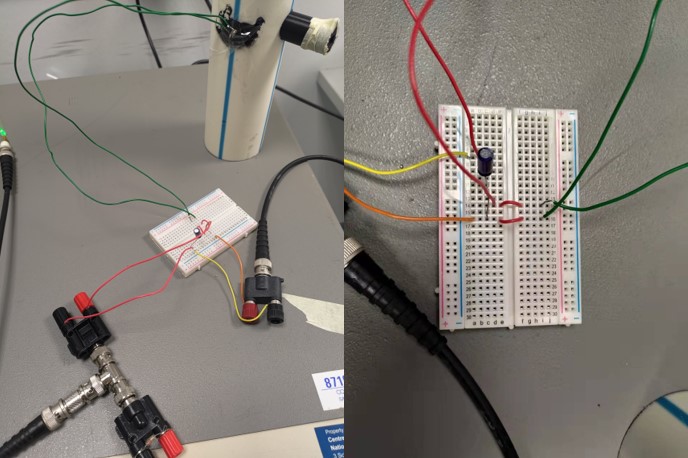
In this part, we use BWP34 Silicon PIN Photodiode as the detector. Here the capacitor and resistor are used to protect the photodiode.
Lock-In Amplifier Setup
Video
In this video, we have recorded the voltage change in the lock-in amplifier under the situation when the smoke gradually drifts in, maintains and finally disappears.
